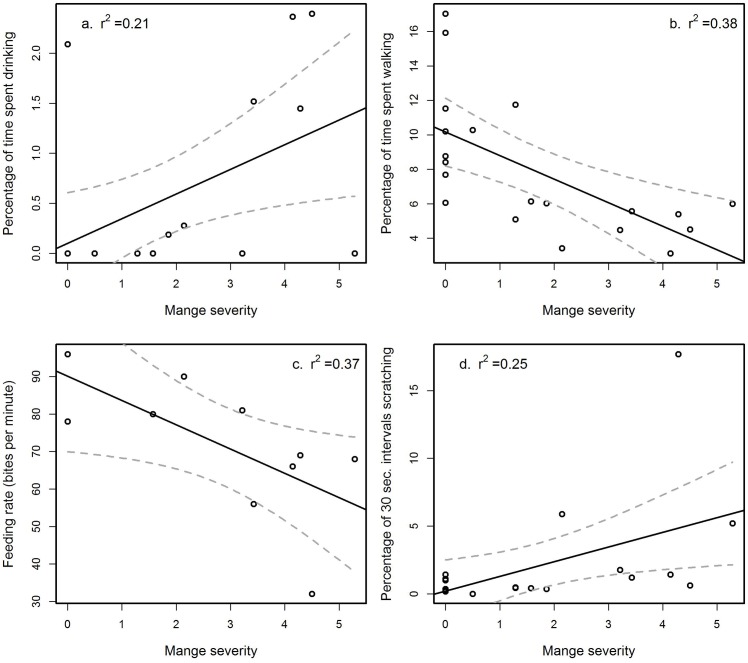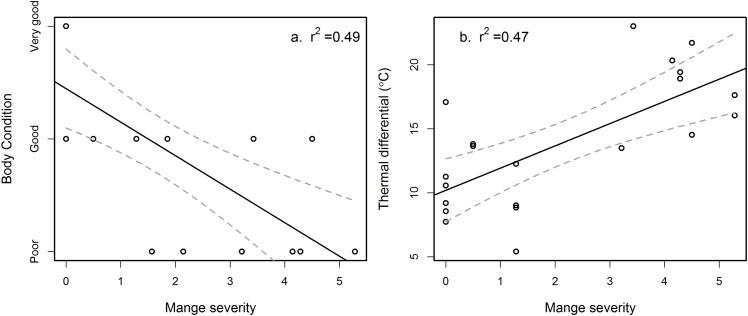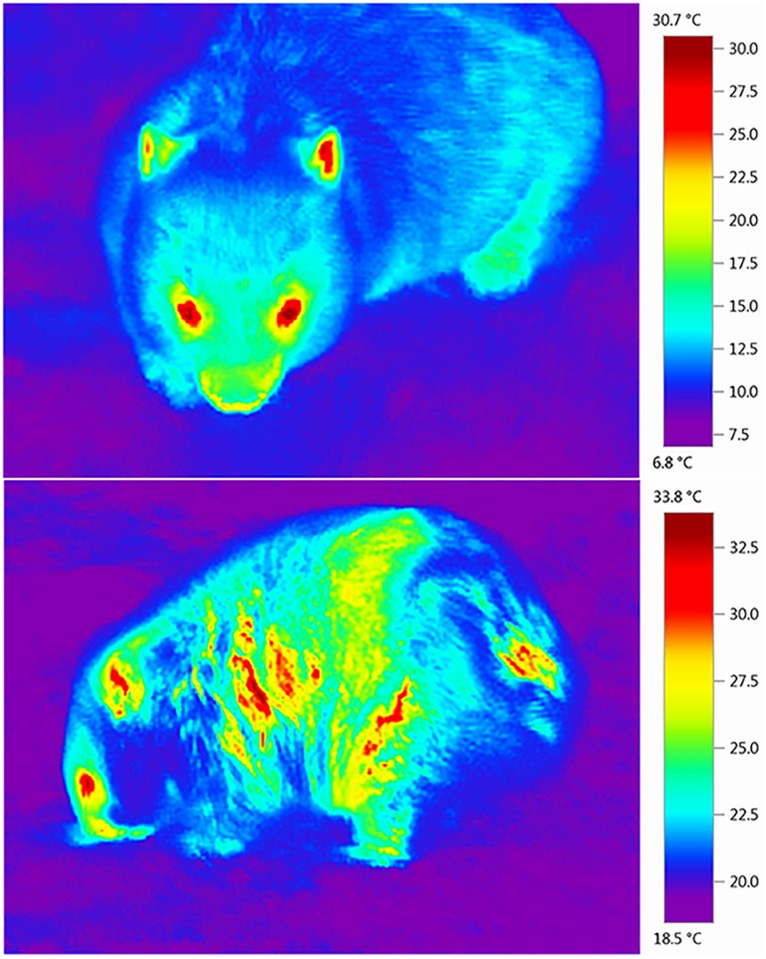The images for Figs 4, 5 and 6 appear in the incorrect order in the published article. The image that appears as Fig 4 should be Fig 5, the image that appears as Fig 5 should be Fig 6, and the image that appears as Fig 6 should be Fig 4. The captions appear in the correct order. Please see the correct Figures and their captions here. The publisher apologizes for the errors.
Fig 4. The significant indirect effects of sarcoptic mange on the behaviour of common wombats (Vombatus ursinus).
Wombats infected by mange exhibit changes to time allocations to above ground behaviours: (a) they spend a higher percentage of time drinking water, (b) a lower percentage of time walking, (c) have a slower feeding rate and (d) higher percentage of 30 second time intervals scratching.
Fig 5. The effect of mange on common wombats (Vombatus ursinus) at Narawntapu National Park in Tasmania.
On the left (a) loss of body condition (F(1, 18) = 18.4, P<0.001) and on the right (b) loss of heat to the environment as represented by temperature differential (Z = 8.99, P<0.001).
Fig 6. Thermal images of common wombats (Vombatus ursinus) taken with a Testo (875-2i) high resolution thermal imaging camera with a 2x telephoto lens.
Shows a healthy wombat (top) and a wombat exhibiting signs of sarcoptic mange (bottom), a disease caused by the Sarcoptes scabiei mite. Note the differences in the thermal profile between the two images.
Reference
- 1.Simpson K, Johnson CN, Carver S (2016) Sarcoptes scabiei: The Mange Mite with Mighty Effects on the Common Wombat (Vombatus ursinus). PLoS ONE 11(3): e0149749 doi: 10.1371/journal.pone.0149749 [DOI] [PMC free article] [PubMed] [Google Scholar]





